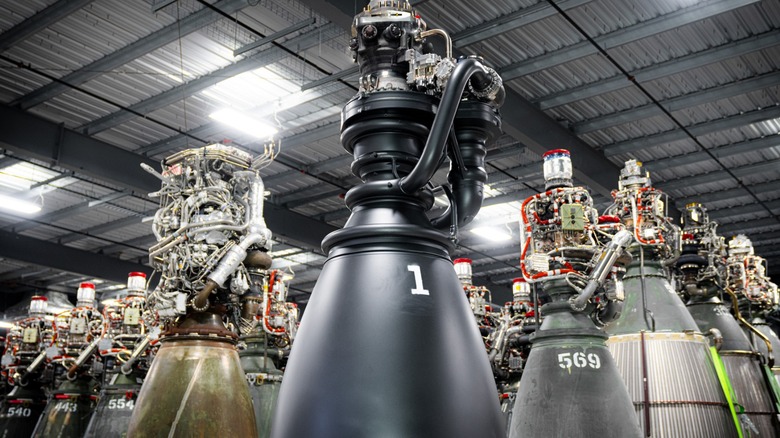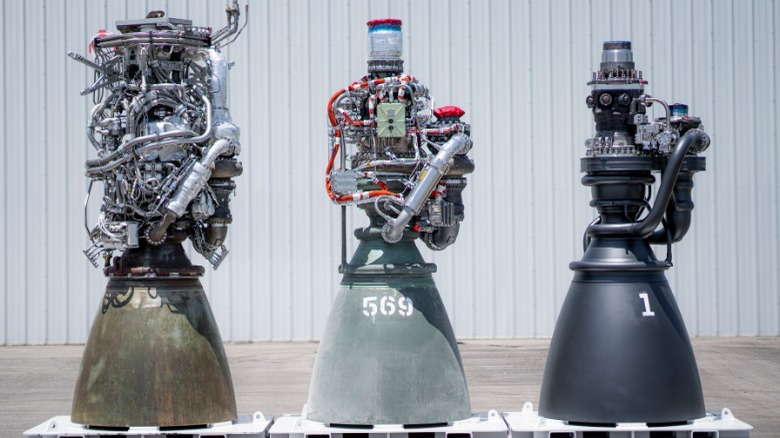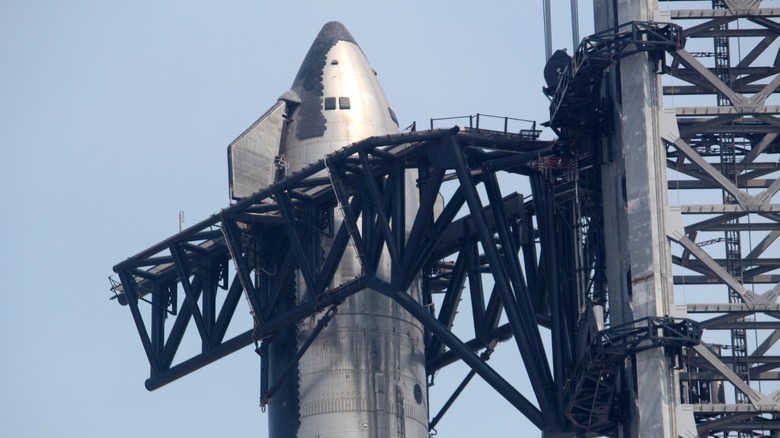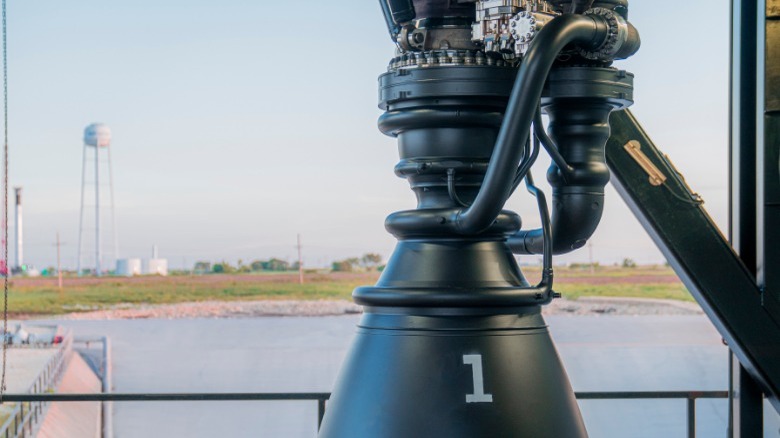Everything We Know About SpaceX's New Raptor 3 Engine
Those who follow the exploits of SpaceX – the commercial space launch and exploration company — recently learned that it has announced its third-generation reusable methane-oxygen staged combustion engine, the Raptor 3. The Raptor has a reputation as the powerhouse in SpaceX's arsenal, as it offers significantly more thrust than the company's smaller but reputedly more reliable engine, the Merlin – among other differences between the engines. Both the company and its founder, Elon Musk, have posted about the recently completed new model on X (formerly Twitter) as well as some information about the enhancements that the engineers have made to its design.
This is certainly exciting news for fans of the company, but you might have a few questions about this new engine. To start, you'll probably want to know the ways SpaceX has improved its design over the last two generations in terms of specs. You will also probably be interested to learn the kind of craft this engine is designed for, and the plans SpaceX has for developing it further. There isn't a ton of information about the Raptor 3 that is publicly available just yet, but here's everything that we know about it so far.
Specs compared to previous versions
One of the most important aspects to consider when looking at any generational leap in technology is the ways that the new model improves performance over the old. SpaceX not only shared the Raptor 3's specs, but it also shared those from the Raptor 1 and 2 so that you can see the growth in power and utility. The company did this across three units of measurement. It compared thrust, which is measured in ton-force units (tf) — illustrating the amount of force output, specific impulse, which is measured in seconds (s) — showing the engine's efficiency in using fuel to generate thrust, and the engine's weight, measured in kilograms (kg).
The Raptor 1 had a 185tf thrust, a 350s specific impulse, and an engine mass of 2080kg. The Raptor 2 had a 230tf thrust, a 347s specific impulse, and a 1630kg engine mass. The new Raptor 3 has a 280tf thrust, a 350s specific impulse, and an engine mass of 1525kg.
This shows that SpaceX has managed to give the Raptor 3 a significant boost in thrust and reduce its overall weight simultaneously, while not drastically affecting its specific impulse.
Ship use
Now that you know a bit about the improvements that SpaceX has made to the Raptor's design, you might be interested in learning what kind of craft the company is going to put it in. SpaceX has not outright declared what the Raptor 3 will be used for, but the presumption is that it will go into the SpaceX Starship class craft.
This is a combination of the Starship spacecraft and the Super Heavy rocket, which SpaceX says is "designed to carry both crew and cargo to Earth orbit, the Moon, Mars and beyond." It's a reusable transport ship which SpaceX claims is "the world's most powerful launch vehicle ever developed, capable of carrying up to 150 metric tonnes fully reusable and 250 metric tonnes expendable."
Each Starship craft is powered by six Raptor engines, including two different kinds. Three are Sea Level Raptor engines and three are RVac Raptor engines. Meanwhile, the Super Heavy rocket has many more engines. It's powered by a grand total of 33 Raptor engines.
Future development
As mentioned, there are two different versions of each generation Raptor engine: the Sea Level model and the RVac model. The recent unveiling was only for the Sea Level model. The Sea Level engines are designed for liftoff and escaping a planet's gravity and atmosphere, while the RVac is designed to operate in a vacuum. Although they have similar designs, the RVac model has a much larger exhaust and expansion nozzle. These help to make it more efficient in extraplanetary travel, with Musk noting on X the projected future capacity of the RVac model, "In a few years, we will finally have a Raptor 3/4 vacuum version (giant nozzle) that has an Isp [specific impulse] of 380."
Just because SpaceX has revealed the Raptor 3 doesn't necessarily mean that they're done tinkering with it. Another post from Musk suggested that the company's engineers were still working to refine the engine. "Important to note that the induced mass (mass required by a given engine design that is not the engine itself) of Raptor 3, while far better than Raptor 2, still has a lot of room for improvement," he said on X. "Thrust will exceed 300 tons with Raptor 3.x (thrust/mass>200), enabling 10,000 tons of thrust at liftoff and there might be up to 5 sec of Isp gain over time." This implies that there will be upgraded versions of the Raptor 3, before the company moves on to working on a next-generation model.



